
The logic that one way to ease pressure on healthcare services is to prevent more people getting ill underpins a piloting of new health and wellness projects in Dublin city.
The State’s “health” policy could be more accurately described as a “sickness” policy, says Jack Lehane, ecosystem manager with Smart D8, as much of the €20 billion-plus budget is spent on treating illness. “There is an idea that you can engage populations at scale and limit the number of people who end up getting sick in the first place. Maybe we could use our resources a little more ‘smartly’. Maybe we don’t need bigger hospitals; we just need fewer people getting sick.”
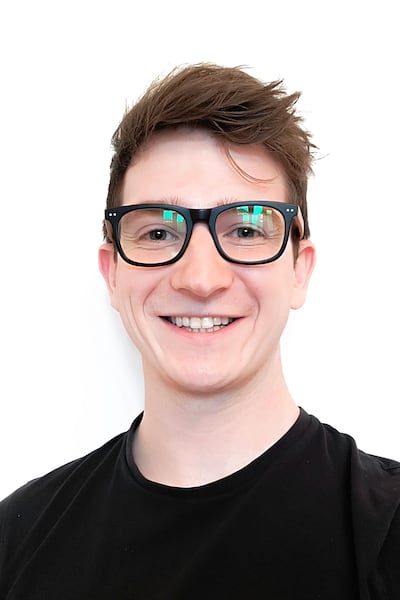
D8 is one of the Smart Dublin districts that are looking to fast-track technological innovations to solve local social challenges, with an eye on potential for scaling up citywide, or even nationally and internationally. Working on a catchment area of 43,000 people that encompasses neighbourhoods such as the Liberties, Kilmainham and Rialto, as well as St James’s Hospital and St Patrick’s Mental Health Services, Smart D8 is focusing on health initiatives.
A 2020 survey of 250 local residents found 31 per cent had long-standing health problems; 27 per cent had accessed mental health service supports in the previous two years; and 21 per cent had unmet health needs due to waiting lists. Smart D8 is a 12-partner consortium led by, among others, Dublin City Council and the Digital Hub, and incorporates academia, public sector, private enterprise and civil society.
Excuse My French restaurant review: An experience simply unlike anything else in Dublin
Ireland’s remote islands: Only 29 apply for €84,000 grant aimed at attracting residents
10 of the best new shows to watch in April: including Netflix medical drama and two AppleTV+ releases
MobLand review: Pierce Brosnan’s Irish accent is a horror for the ages. Forget licence to kill, this is more Darby O’Gill
Its latest recipients of a share of €50,000 funding to advance pilot projects talk here about their work:
MoveAhead
Who: Cofounders Jamie McGann and Johann Issartel, based in the Guinness Enterprise Centre, Dublin 8.
Health issue: Many children can no longer hop, skip, jump or run properly due to the sedentary nature of childhood. Youngsters are not meeting their age milestones in the development of fundamental movement skills, which are the building blocks for physical activity and sport. At the same time, children are spending many hours a day in front of a screen.
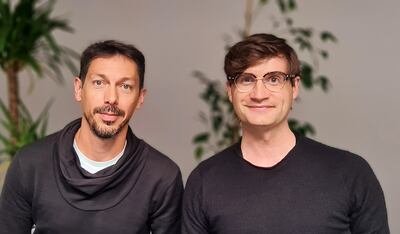
Solution: Embracing the philosophy of, if you can’t beat ‘em, join ‘em, MoveAhead is working to “bring movement and physical development into the digital space”, says McGann. They have developed an AI-powered “engine” built on the world’s largest data set of children’s movement skills that can be embedded in apps to motivate and educate children in the development of these skills through individualised, real-time feedback in games.
How it works: This software can be used on any device that has a camera to track the movement of the child’s arms, legs, hands, feet, etc.
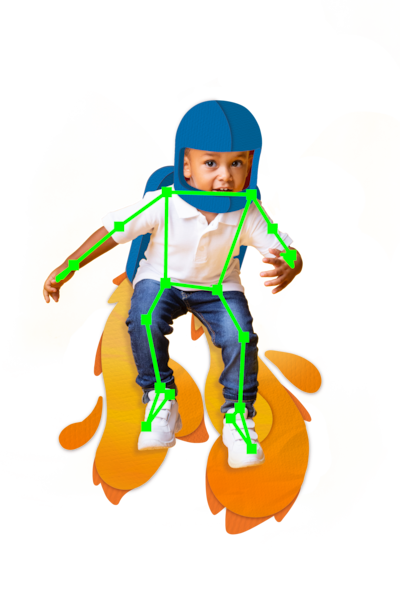
“We track 32 key points of the body and we understand the movement as co-ordinates. The only way we have been able to build it like that is because we have gathered so much data and we have the science behind it,” says McGann. It is completely safe in that it doesn’t use images of the child; it just uses the co-ordinates of the body.
The database covers more than 100 movement skills by children all over the world “so whatever way you move, we are able to understand what you are trying to do”, he explains. The software can assess quality of movement, for both the child’s age and development stage, and help them to improve incrementally. Elements of a game, eg the better a child jumps, the bigger the splash created in a virtual puddle, give immediate feedback and guidance to a child.
“Because we understand how children move and learn, it is never too hard and it is never too easy. That is really important for development and engagement, encouraging them to play and to improve,” says McGann, a former teacher at a primary school in Ballyfermot.
“It’s about meeting kids where they are and giving them opportunities to play and develop skills that we would have developed through hopscotch, skipping and leap frog.” The dearth of such daily games means children are no longer learning from their peers and there is a big difference between how a parent and a five-year-old child moves, he says.
Measuring impact: Research has been conducted out of the DCU School of Health and Human Performance. A paper published in 2019 showed how a game using the software led to a 98 per cent improvement in skills measured after six weeks of playing it in a school setting, he says.
“It showed us the technology, combined with the repetition of play and the right opportunities, enabled children to improve these skills pretty quickly.” Their technology has also been validated by a French company which had developed a new racket and wanted to evaluate children’s tennis skills. It saved them having to bring children into studios to connect them to sensors.
Where it goes from here: A tie-up with a world-leading confectionery brand is due to be announced shortly. The software is to be incorporated into a movement feature in the brand’s app, which has up to 60 million users.
Ultimately, MoveAhead’s priority, McCann explains, is for the software to be used in the education sector. It can provide significant feedback to parents, teachers and policymakers, as well as to the children themselves through the games. For now, the games and entertainment sector is giving the company the chance to test and refine it. MoveAhead is a team of 10 and growing.
OSA [Obstructive Sleep Apnoea] Identifier
Who: Dr Brian Kent, consultant in respiratory and sleep medicine at St James’s Hospital.
Health issue: Increased incidence and more awareness of sleep apnoea means there are long waiting lists “around the island” of 18 months to two years for a first clinical appointment with a specialist, says Kent. OSA is a medical disorder that is estimated to affect up to 15 per cent of the population. “If not identified, it can cause an awful lot of debilitating symptoms and is potentially quite hazardous. People who have sleep apnoea will have normal breathing when they are awake, but when they fall asleep their breathing will become very erratic and disturbed.”

That leads to significant fluctuations in oxygen levels, as well as fragmented sleep. The latter causes people to feel very tired and often incapable of functioning during the day, while the low oxygen levels increase the risk of heart attack and stroke.
Currently, the process of diagnosis involves multiple visits to a hospital, which is labour intensive and a burden on the patient. Sleep testing needs to be conducted in a clinic, or the patient is “festooned” with a kit for home testing overnight and has to come in the next day with it, “looking like an extra from a horror movie”, he says.
Solution: Streamline the diagnostic process, to make it speedier and more convenient for the patient and more cost effective for the hospital.
How it works: In collaboration with software company myPatientSpace and sleep therapeutics company ResMed PEI, an app has been built both to gather patient information and facilitate remote clinical consultations. This works in conjunction with a testing device sent out to the patient.
A patient referred by a GP, or from elsewhere in the hospital, is registered for the sleep disorders clinic and invited to download the app. It takes them through a consultation, during which they fill out a questionnaire, “helping us to get a pretest assessment of how likely the person is to have sleep apnoea”, Kent explains. Where appropriate, the patient is sent a single-use testing device, which transmits sleep data to a cloud-based platform, from where the clinical team can assess it.
A one-on-one video clinical consultation is then conducted remotely through the app, the outcome of which will be:
a) they are fine and can be discharged;
b) they need to be treated for sleep apnoea; or
c) about 5 per cent might need to undergo further diagnostic testing at the hospital.
OSA can be only treated, not cured, and this is done through a bedside breathing machine.
Measuring impact: A feasibility study on eight patients resulted in significantly shorter waiting times than for those attending conventional clinics and user experience was largely positive. “Most people enjoyed the experience of not coming to the hospital,” Kent says. “So far their acceptance of any treatment measures has been equivalent to what we would expect from a conventional pathway.” The next phase of evaluation will cover not only user experience but also clinical outcomes.
“We need to compare how the people who go through the app-based process do in terms of treatment success compared with people who are coming to normal clinic. If you are altering how you do things, you have to be able to demonstrate it is at least as good, if not better, than what we were doing before.”
Where it goes from here: If they can prove the OSA Identifier is safe and effective among a bigger cohort of patients, he believes it has “significant saleability”. Sleep apnoea now accounts for more than half of referrals to respiratory clinics in the UK and is likely to be similar here, on the basis of what he sees in St James’s.
“Care of this disorder is not rocket science and a lot of people have it, so we really need to find expedited pathways to get decent quality care to these people,” he adds. “I am hoping this turns out to be part of the solution but what’s definitely clear is that the way we have been doing things hasn’t been good enough in terms of getting the care to everyone who needs it.”
Brace
Who: Cofounder Conor Motyer, based in the Guinness Enterprise Centre.
Health issue: The psychological challenges of a physical rehabilitation programme after injury can affect not only a person’s mental health but also the physical outcome. A hockey player and accountant, Motyer had first-hand experience of this after he struggled to return to fitness from a dislocated knee. “I knew in theory what I needed to do to give me the best chance to get back to my best health level. Sometimes that required only five or 10 minutes of exercises [a day] but I could feel no motivation to do it, or I wasn’t doing it 100 per cent.”
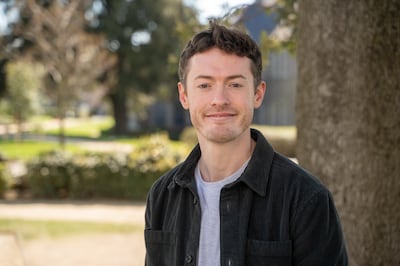
Research shows that people recovering from injury can feel isolated, anxious and depressed, with completion rates of rehab programmes as low as 50 per cent. “There is a social disconnect if they are removed from their sports club or workplace. All of these mental factors impact your motivation and it becomes a lot harder to engage in the ongoing process of rehabilitation.”
Solution: To build an app to motivate the user to adhere to their rehabilitation plan and help them feel less isolated. Successful aps in the fitness and education sectors, such as Strava and Duolingo, have shown how gamification and sense of community are key drivers in motivating people to stick to a plan and complete daily tasks, he says.
The Brace app (bracesocial.com) has been available for the past 18 months, but looks very different now from the prototype. “What we were looking to do was to get it in front of users as early as possible so we could build it alongside [them], and really understand the need and the problem that we were solving.”
Measuring impact: They have tried to contact every one of the 600 users from 65 countries who have signed up for the app in the past year, to hear their views on it. “It was through user engagement that we had the confidence for some of the pilots and partnerships that we are going into because we can demonstrate some of the wellbeing and motivational aspects that we have seen,” he says. One of those pilot schemes is with the IRFU, to support players recovering from rugby injuries. In evaluating Brace, they are looking at both engagement and sentiment.
The app is designed to not only track a user’s adherence and progress in rehabilitation but to capture mental markers too. It offers the opportunity to post milestones and people can search for other users in the same sport or with a similar injury with whom to compare notes. This community-based rehabilitation platform could also help physiotherapists with the challenge of motivating patients to engage with prescribed exercises.
Where it goes from here: They are developing a practitioner account on the app so a physio can build rehabilitation programmes and track individuals while overseeing a group. It will act as an “early warning system of people dropping off or having a difficult time”, says Motyer.
Although rehabilitation from sports injuries has been used as a “test bed” so far, this Smart D8 funding gives Brace the opportunity to reach a more diverse range of people in terms of age and activity level. The challenge in any form of rehabilitation programme, he adds, is how do you motivate yourself to get back to the best physical and mental outcome that you can?
Menopause and the City
Who: Dr Louise Fitzgerald, a GP at Grafton Medical, Dublin 2 and creator of medical information website InforMD.ie.
Health issue: Inequality within menopause care, due to lack of positive education and support. Many GPs are not willing to discuss menopause health due to lack of time or training, says Fitzgerald, who runs a dedicated menopause clinic at Grafton Medical, where the medical card list covers part of Dublin 8. Access to private menopause clinics is limited by cost and waiting lists, she says, while public menopause clinics are generally available only for complex menopause patients, such as those with a history of breast cancer.
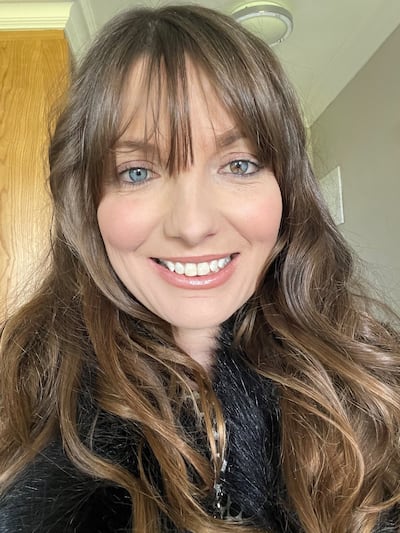
About 75 per cent of women experience menopausal symptoms and about a quarter describe them as severe. A spectrum of physical and psychological symptoms can complicate pre-existing challenges, such as physical or mental health problems, and disability. This is particularly relevant in Dublin 8, she says, where 31 per cent of the community report long-standing health problems and 27 per cent have accessed mental health support in the past two years. Although the conversation around menopause is getting louder, she says there is still a lot of misinformation, as celebrities and other private interests jump on the bandwagon, selling products and workshops.
Solution: To provide reliable information and practical advice about physical and mental health, particularly cardiovascular and bone health, that she says all women going through the peri menopause and menopause should be given, regardless of symptoms and other medical interventions, such as HRT. The project also involves the development of a free, peer support network.
How it works: Materials will be distributed via GPs, pharmacies, public health clinics, primary care centres and local businesses in Dublin 8. A website is also being developed with educational content on nutrition and exercise, emotional wellbeing, bone health and cardiovascular health, which can be accessed through a QR code carried on other materials. A network of “menopause champions” is being created to support those going through menopause, and for relatives and friends. Network members can help direct others to resources and/or provide a safe, listening space, such as within support groups. These champions “may have personal experience of menopause but this is not essential, nor is it a role limited to women”, she says.
Measuring impact: Fitzgerald will audit the impact of the project using recognised standards such as the Greene Climacteric Scale or the Menopause-Specific Quality of Life Questionnaire.












